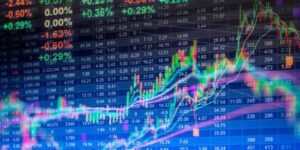by The Cowl Editor on February 15, 2018
National and Global News
by Ernie Andreoli ’18
News Staff

The stock market experienced a severe dip on Monday, February 5 as the Dow Jones Industrial Average closed down 1,175 points, or 4.6 percent. A drop of this magnitude has not been recorded since the index dropped by 778 points in September 2008, in the course of the Great Recession. Specific macroeconomic factors precipitated the stock market’s oscillation. “This is a correction in the stock market,” noted Dr. Christopher Limnios, assistant professor of economics at Providence College. “As economists, we have to ask ourselves why this occurred,” added Limnios.
On Feb. 2, the Bureau of Labor Statistics reported that the United States’ economy added 200,000 jobs in January. According to the report, this addition marked the 88th consecutive month in which the economy added jobs to the market. Average hourly earnings rose to $26.74, with an annual growth of 2.9 percent—an upturn not seen since June 2009. In conjunction, the unemployment rate currently stands at 4.1 percent. Altogether, the growth in the labor market, and the previously steady bull market, prompted investors’ fears over the likelihood of further interest rate increases by the Federal Reserve, or “Fed,” as well as the prospect of higher inflation.
As reflected in the volatility in the Dow Jones index and the S&P 500, among other equity indices, the drop off was attributed to investors’ panic that a loss in real value of the dollar could lead to additional interest rate increases by the Fed. “We have had prolonged low interest rates since 2009, so many investors reacted to the prospect of higher inflation by hastily betting on what the Fed will do,” stated Limnios. As a side note, analysts have examined trends in the Fed Funds futures market, and projected three interest rate increases for this year. Yet since the recession, inflation in the United States’ economy has not deviated from its 1 to 2 percent level. “While we do not have a sure handle on inflation, many investors reacted to the signal of labor market inflation last week,” declared Limnios.
In addition to the perils of rising inflation, the Federal Reserve’s interest rate strategy moving forward will also take into account the recent $1.5 trillion tax cut passed on Dec. 20, as well as the passage of a two-year spending deal for the federal government approved by President Trump on Feb. 9. Also, on Feb. 14, the Bureau of Labor Statistics released a monthly report revealing that prices rose, across sectors, more than expected in January. This surprising jump in prices was reflected in a 0.3 percent increase in the Consumer Price Index, excluding food and energy, two uniquely volatile categories typically omitted in order to better determine the inflation trend. This revelation will play a key role in stock market volatility over the coming weeks.
So, how does this turbulence affect people’s daily spending habits? According to Edward Wolff, an economist at New York University, 84 percent of all stocks are held by the richest 10 percent of Americans. In contrast in 2001, “the richest 10 percent owned only 77 percent of all stocks,” noted Wolff in an interview with NPR on Feb. 12. Despite this concentration, consumer spending, particularly on durable goods such as appliances, houses, and cars, is impacted. This “psychological effect from a decline in markets,” according to Limnios, could prompt a recoil in consumer spending. While the United States’ GNP diminished a great deal during the Great Recession, there has been tremendous recovery in a variety of sectors since then. Prior to the stock market’s descent last week, the Dow Jones yielded a 25 percent return over the last year. For the most part, the stock market is essentially back to where it stood in December 2017. “These are growing pains,” acknowledged Limnios. “We are going to see further growth in output, but people jumping the gun on the Fed’s decisions will lead to dips in the stock market.”